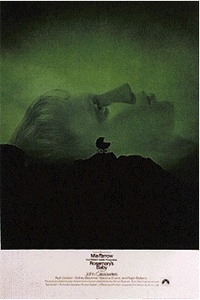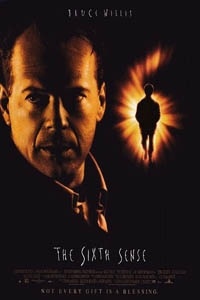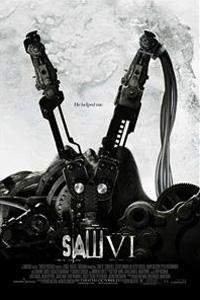 With Lionsgate’s “The Last Exorcism” opening this weekend, a look back at cinema’s lasting love affair with the horror genre is in order. Retrospection confirms that movies that scare us are among the most consistently beloved (though rarely by critics) and revenue generating of all the various and sundry genres on the cinematic menu.
With Lionsgate’s “The Last Exorcism” opening this weekend, a look back at cinema’s lasting love affair with the horror genre is in order. Retrospection confirms that movies that scare us are among the most consistently beloved (though rarely by critics) and revenue generating of all the various and sundry genres on the cinematic menu.
See the Hollywood.com review of “The Last Exorcism” by our own Thomas Leupp – ‘The Last Exorcism’ Movie Review
 From the earliest days of cinema, audiences have been transfixed, intrigued, repulsed, amazed, and sometimes literally scared to death by films such as the 1922 release of “Nosferatu,” 1925’s “Phantom of the Opera,” starring Lon Chaney (wherein the reveal of Chaney’s disfigured face had women fainting and people running for the aisles), and into the classic period of the Universal Studios horror films of the ’30s and ’40s. Vampires, werewolves, mummies, invisible men, and Frankenstein’s monster helped create a cinematic language all its own and a canvas on which filmmakers could paint their spooky stories. Some of the finest movies of the time were steeped in horror fable and presented imagery that stretched the boundaries of the makeup and special effects of the time. James Whale’s 1935 classic “Bride of Frankenstein” was one of the first movie sequels and is acknowledged to be one of the best films (horror or otherwise) of all time.
From the earliest days of cinema, audiences have been transfixed, intrigued, repulsed, amazed, and sometimes literally scared to death by films such as the 1922 release of “Nosferatu,” 1925’s “Phantom of the Opera,” starring Lon Chaney (wherein the reveal of Chaney’s disfigured face had women fainting and people running for the aisles), and into the classic period of the Universal Studios horror films of the ’30s and ’40s. Vampires, werewolves, mummies, invisible men, and Frankenstein’s monster helped create a cinematic language all its own and a canvas on which filmmakers could paint their spooky stories. Some of the finest movies of the time were steeped in horror fable and presented imagery that stretched the boundaries of the makeup and special effects of the time. James Whale’s 1935 classic “Bride of Frankenstein” was one of the first movie sequels and is acknowledged to be one of the best films (horror or otherwise) of all time.
 Just as horror often reflects the Jungian idea of the collective unconscious, so the late ’50s brought the Cold War and the threat of nuclear annihilation and the effects of radioactive contamination into the minds of the fear-laden masses, and this was reflected in the films of that era. The invasion of Earth by unwelcome and hostile creatures from other worlds, along with incredible shrinking men, giant-sized bugs and the occasional “Fly,” reflected the fears of the day and threw them back at the audience via the big screen. When Steve McQueen fought the red ooze that was “The Blob” in the 1958 horror classic, there was no question what “red scare” he was really fighting. (Possibly scarier for McQueen was that he was only paid $3,000 to appear in the film, and it went on to earn $4 million!)
Just as horror often reflects the Jungian idea of the collective unconscious, so the late ’50s brought the Cold War and the threat of nuclear annihilation and the effects of radioactive contamination into the minds of the fear-laden masses, and this was reflected in the films of that era. The invasion of Earth by unwelcome and hostile creatures from other worlds, along with incredible shrinking men, giant-sized bugs and the occasional “Fly,” reflected the fears of the day and threw them back at the audience via the big screen. When Steve McQueen fought the red ooze that was “The Blob” in the 1958 horror classic, there was no question what “red scare” he was really fighting. (Possibly scarier for McQueen was that he was only paid $3,000 to appear in the film, and it went on to earn $4 million!)
 The 1960s were no less important in terms of the genre’s influence and continued popularity with audiences. The 1968 filmed version of Ira Levin’s famed novel “Rosemary’s Baby,” as directed by Roman Polanski and starring the angelic 23-year-old Mia Farrow and legendary indie filmmaker/actor John Cassavetes, was a purely psychological affair, with nary a drop of blood or image of gore in sight. The movie, however, scared the living crap out of people and so affected moviegoers at the time that many claimed the baby had horns and a gruesome face and thus fueled many of their nightmares for weeks. (by the way, the baby is NEVER shown in the film.)
The 1960s were no less important in terms of the genre’s influence and continued popularity with audiences. The 1968 filmed version of Ira Levin’s famed novel “Rosemary’s Baby,” as directed by Roman Polanski and starring the angelic 23-year-old Mia Farrow and legendary indie filmmaker/actor John Cassavetes, was a purely psychological affair, with nary a drop of blood or image of gore in sight. The movie, however, scared the living crap out of people and so affected moviegoers at the time that many claimed the baby had horns and a gruesome face and thus fueled many of their nightmares for weeks. (by the way, the baby is NEVER shown in the film.)
 The spiritual progeny of that film came in the early ’70s with another and equally influential adaptation of a bestselling novel. In 1973, “The Exorcist” had people lining up around the block at movie theaters and had the nation and box office abuzz. Written by William Peter Blatty (who also penned the screenplay), the William Friedkin-directed film was a slow-burn masterpiece and used the almost sadistic ratcheting up of the level of dread in the film to drive the audience mad. It worked, and as pea-soup sales took a nosedive, the film (released ironically enough on the day after Christmas) became the highest-grossing film of that year with a massive unadjusted gross of $165 million and a national phenomenon. Films like “The Last Exorcism” and 2005’s “The Exorcism of Emily Rose” have their cinematic DNA rooted in films like “Rosemary’s Baby” and “The Exorcist.”
The spiritual progeny of that film came in the early ’70s with another and equally influential adaptation of a bestselling novel. In 1973, “The Exorcist” had people lining up around the block at movie theaters and had the nation and box office abuzz. Written by William Peter Blatty (who also penned the screenplay), the William Friedkin-directed film was a slow-burn masterpiece and used the almost sadistic ratcheting up of the level of dread in the film to drive the audience mad. It worked, and as pea-soup sales took a nosedive, the film (released ironically enough on the day after Christmas) became the highest-grossing film of that year with a massive unadjusted gross of $165 million and a national phenomenon. Films like “The Last Exorcism” and 2005’s “The Exorcism of Emily Rose” have their cinematic DNA rooted in films like “Rosemary’s Baby” and “The Exorcist.”
The late-’70s and the 1980s saw the introduction of the sequel-spawning/slasher/teen-killing/money-making horror films such as “Halloween,” “Nightmare on Elm Street” and “Friday the 13th.” In one fell swoop, the genre eschewed the psychologically driven horror of the early ’70s in favor of blood, guts and boobs. The formula worked, and Michael Myers, Jason Vorhees and Freddy Krueger became the new Frankenstein, Wolfman and Dracula to a nation of bloodthirsty teens. Even in the late-2000’s, updated versions of these new horror classics thrive at the box office with Warner Bros.’ “A Nightmare on Elm Street” achieving number one with a whopping $32.9 million debut weekend back in April of this year.
 The 1990s saw two types of horror co-existing and thriving. First, the R-rated mash-up of comedy and horror that would become the incredibly successful “Scream” franchise captivated audiences looking to laugh as much as they screamed. At a midnight screening of the film two full months before its intended release at the ShowEast movie convention in October of 1996, a theater full of recruited high school kids went absolutely insane as Drew Barrymore’s character was teased, taunted and tortured by a voice on the phone in the opening scene. After working the audience into a squirming, giggling and orgiastic frenzy, the film delivered the payoff of Drew being eviscerated by her killer. The audience members were hooked and like teens on the scariest roller-coaster in the theme park, they wanted to take that ride over and over again. With domestic box office reaching $103 million, the film became appropriately enough, the 13th-highest-grossing film released in 1996.
The 1990s saw two types of horror co-existing and thriving. First, the R-rated mash-up of comedy and horror that would become the incredibly successful “Scream” franchise captivated audiences looking to laugh as much as they screamed. At a midnight screening of the film two full months before its intended release at the ShowEast movie convention in October of 1996, a theater full of recruited high school kids went absolutely insane as Drew Barrymore’s character was teased, taunted and tortured by a voice on the phone in the opening scene. After working the audience into a squirming, giggling and orgiastic frenzy, the film delivered the payoff of Drew being eviscerated by her killer. The audience members were hooked and like teens on the scariest roller-coaster in the theme park, they wanted to take that ride over and over again. With domestic box office reaching $103 million, the film became appropriately enough, the 13th-highest-grossing film released in 1996.
 Three years later, a completely different kind of horror movie shook audiences to their core and elevated the twist ending to high art. Newcomer M. Night Shyamalan quietly delivered “The Sixth Sense” to an unsuspecting public and at the same time reintroduced the thrill of psychological horror to the late-’90s masses. The film, starring Bruce Willis in a total career-changer, grossed a massive and unexpected $293.5 million in domestic receipts alone and was the second-highest-grossing film released in 1999, behind only the most anticipated movie in two decades…wait for it…”Star Wars: Episode One – The Phantom Menace,” which grossed a jaw-dropping $431.1 million.
Three years later, a completely different kind of horror movie shook audiences to their core and elevated the twist ending to high art. Newcomer M. Night Shyamalan quietly delivered “The Sixth Sense” to an unsuspecting public and at the same time reintroduced the thrill of psychological horror to the late-’90s masses. The film, starring Bruce Willis in a total career-changer, grossed a massive and unexpected $293.5 million in domestic receipts alone and was the second-highest-grossing film released in 1999, behind only the most anticipated movie in two decades…wait for it…”Star Wars: Episode One – The Phantom Menace,” which grossed a jaw-dropping $431.1 million.
 Now onto the 2000s or as some might call it, the decade that introduced the beast that has become known as “torture porn.” Ushered in with great success by Lionsgate with the first “Saw” film in 2004 and further expanded upon by the “Hostel” films and the lesser-known 2005 release “Wolf Creek,” this sub-genre allowed moviegoers to exorcise their own demons through the viewing of other humans being tortured, dismembered and killed in all manner of clever and innovative ways. The twisted and cathartic nature of these films evidently struck a strong chord with audiences and has given the “Saw” franchise life for the past six years and generated an average opening gross for the first six films of a staggering $26.6 million.
Now onto the 2000s or as some might call it, the decade that introduced the beast that has become known as “torture porn.” Ushered in with great success by Lionsgate with the first “Saw” film in 2004 and further expanded upon by the “Hostel” films and the lesser-known 2005 release “Wolf Creek,” this sub-genre allowed moviegoers to exorcise their own demons through the viewing of other humans being tortured, dismembered and killed in all manner of clever and innovative ways. The twisted and cathartic nature of these films evidently struck a strong chord with audiences and has given the “Saw” franchise life for the past six years and generated an average opening gross for the first six films of a staggering $26.6 million.
This abbreviated history of the horror genre was inspired in part by last year’s success of the unlikely box-office juggernaut that was “Paranormal Activity.” Shot on a shoestring budget with virtually zero production value, the film became arguably the most profitable film of all time and is a film-school marketing course unto itself. Simple Formula: $11,000 budget, plus viral marketing, plus tons of press coverage, plus a total domestic gross of over $108 million, multiplied by a movie that actually delivers on the promise of a major subconscious mind-f&*king, equals the box-office horror story of the decade. Of course the sequel will be released by Paramount on October 22 followed by Lionsgate’s “Saw VII” on perfectly enough, Halloween weekend.
With “The Last Exorcism” expected to top the box office this weekend its is frighteningly clear that the horror genre is here to stay and as it was decades ago, it is today: audiences love to have the crap scared out of them in the spooky confines of a darkened movie theatre.


